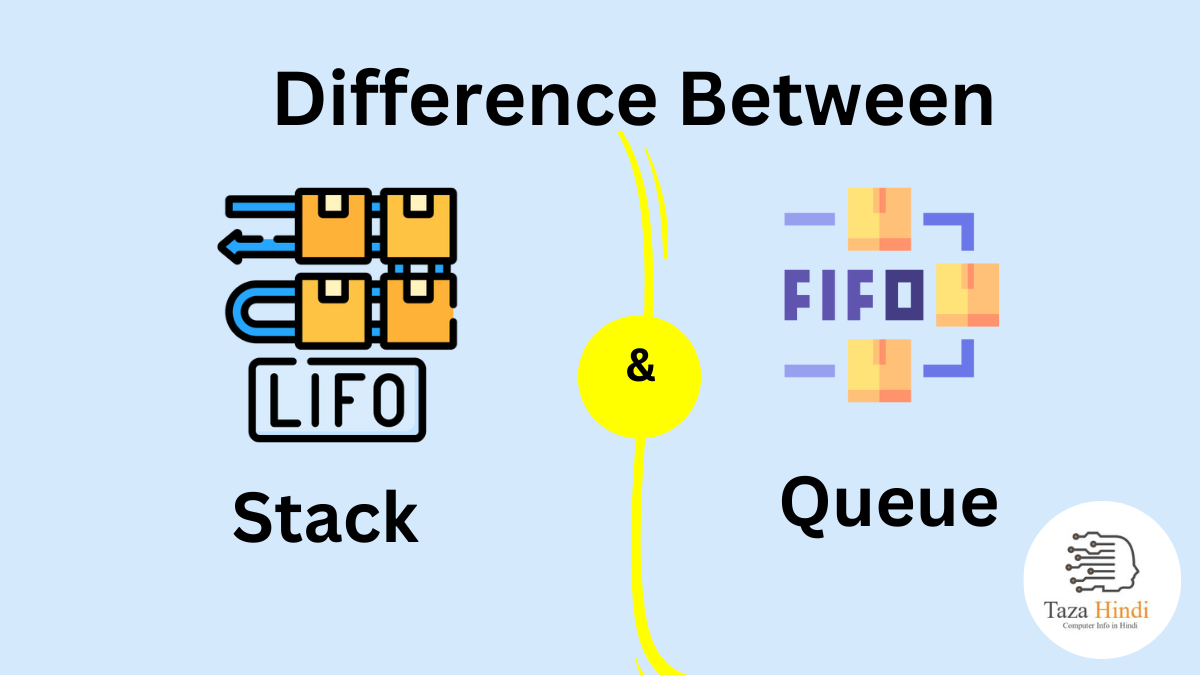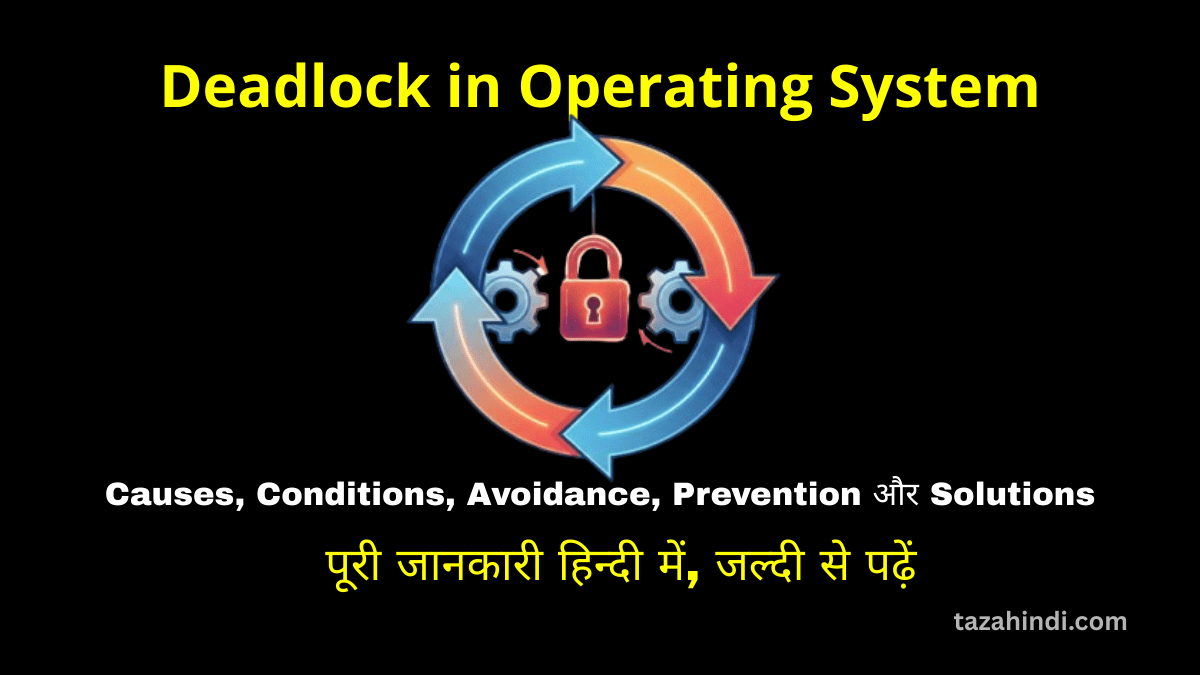The world of computer science and programming is built upon various data structures, each designed to handle data in unique ways. Two fundamental data structures that are widely used are stacks and queues. While both are linear structures, they have distinct characteristics and serve different purposes. In this article, I will explain what is Stack and Queue, role of Stack and Queue, their functionalities, uses and then will discuss what are the main difference between stack and queue.
What is a Stack?
A stack is a linear data structure that follows the Last-In, First-Out (LIFO) principle. It resembles a stack of objects, where the last item added is the first one to be removed. The stack operates on two primary operations: push and pop.
Role of LIFO in Stack
The LIFO (Last-In, First-Out) principle plays a crucial role in defining the behavior and functionality of a stack data structure. In a stack, the LIFO principle governs the order in which elements are added and removed, shaping how the stack operates and providing specific advantages and use cases.
In a LIFO data structure, the most recently added or inserted element is the first one to be removed. Think of it as a stack of objects where the last item placed on top is the first item to be taken off. The LIFO principle can be visualized as a vertical stack, resembling a pile of books, plates, or any physical objects stacked on top of each other.
When elements are added to a LIFO data structure, such as a stack, they are pushed onto the top of the stack. This process is called the “push” operation. The last element added becomes the new top of the stack. Conversely, when elements are removed from the stack, they are popped off the top. The element that was added last is the first one to be removed. This pop operation follows the LIFO principle.
Understanding the LIFO principle is essential for utilizing stacks effectively and designing algorithms that rely on the last-in, first-out behavior. By leveraging this principle, programmers can create efficient and logical solutions to a wide range of problems.
Also Read : Difference between Structure and Union
Basic operations and functionalities of a stack
- Push: This operation adds an element to the top of the stack, increasing its size.
- Pop: This operation removes the topmost element from the stack, reducing its size.
- Peek: This operation allows us to examine the top element without removing it.
Uses cases of Stacks
Stacks find application in various domains, including:
- Function call management: Stacks are used to manage function calls and their respective return addresses.
- Expression evaluation: Stacks can be utilized to evaluate arithmetic expressions, including infix, postfix, and prefix notation.
- Undo/Redo operations: Stacks enable the implementation of undo and redo functionality in applications by storing a history of actions.
Also Read : Difference between Constructor and Method
What is a Queue?
A queue is also a linear data structure, but it adheres to the First-In, First-Out (FIFO) principle. It resembles a queue of people waiting in line, where the first person to join the queue is the first to be served. The queue operates on three primary operations: enqueue, dequeue, and peek.
Role of FIFO in Queue
In a queue data structure, the FIFO (First-In, First-Out) principle plays a fundamental role in determining the behavior and functionality. The FIFO property ensures that elements are processed or accessed in the same order as they were inserted into the queue. This principle is central to how queues operate and provides specific advantages and use cases.
Understanding the role of FIFO in a queue is essential for utilizing queues effectively in programming and problem-solving. By adhering to the FIFO behavior, queues enable fair processing, maintain the order of elements, and find applications in scenarios where the order of arrival is significant.
Also Read : Difference between Method and Function
Basic operations and functionalities of a queue
- Enqueue: This operation adds an element to the rear of the queue, increasing its size.
- Dequeue: This operation removes the front most element from the queue, reducing its size.
- Peek: This operation allows us to examine the front element without removing it.
Uses cases of Queue
Queues are employed in various scenarios, such as:
- Print spooling: Queues are used to manage print jobs, ensuring that they are processed in the order of arrival.
- CPU scheduling: Queues assist in scheduling tasks for execution by the CPU, following predefined algorithms like First-Come, First-Served (FCFS) or Round Robin.
- Message queues: In inter-process communication, queues facilitate the exchange of messages between processes.
Difference between Stack and Queue
While both stacks and queues are linear data structures, they differ in several aspects:
| Stack | Queue |
| Stack follows the LIFO principle, where the last element added is the first to be removed. | Queue follows the FIFO principle, where the first element added is the first to be removed. |
| New elements are inserted and removed from the same end, known as the top. | New elements are inserted at the rear and removed from the front, maintaining the order of arrival. |
| Only the top element is accessible for operations like peeking or removal. | Both the front and rear elements are accessible for operations like peeking, removal, or insertion. |
Also Read : How to Learn and Master Python Programming within one month
Conclusion
Stacks and queues are essential data structures in computer science, each serving distinct purposes. Stacks follow the LIFO principle and are suitable for managing function calls, undo operations, and expression evaluation. Queues, on the other hand, adhere to the FIFO principle and are useful for print spooling, CPU scheduling, and inter-process communication. Understanding their differences is crucial for choosing the appropriate data structure for specific applications and optimizing program efficiency.
FAQs
-
Can a stack be implemented using a queue?
Yes, a stack can be implemented using two queues. However, this implementation is less efficient than the standard stack implementation.
-
Are stacks and queues limited to a certain programming language?
No, stacks and queues are fundamental concepts that can be implemented in various programming languages, including C++, Java, Python, and more.
-
Can a stack or queue be empty?
Yes, both a stack and a queue can be empty if there are no elements present in the data structure.
-
Can stacks and queues be dynamically resized?
Yes, both stacks and queues can be dynamically resized based on the needs of the program or application using them.
-
Are there any real-world examples of stacks and queues?
Yes, stacks and queues have numerous real-world applications, such as managing browser history (stack) and processing customer service calls (queue).



